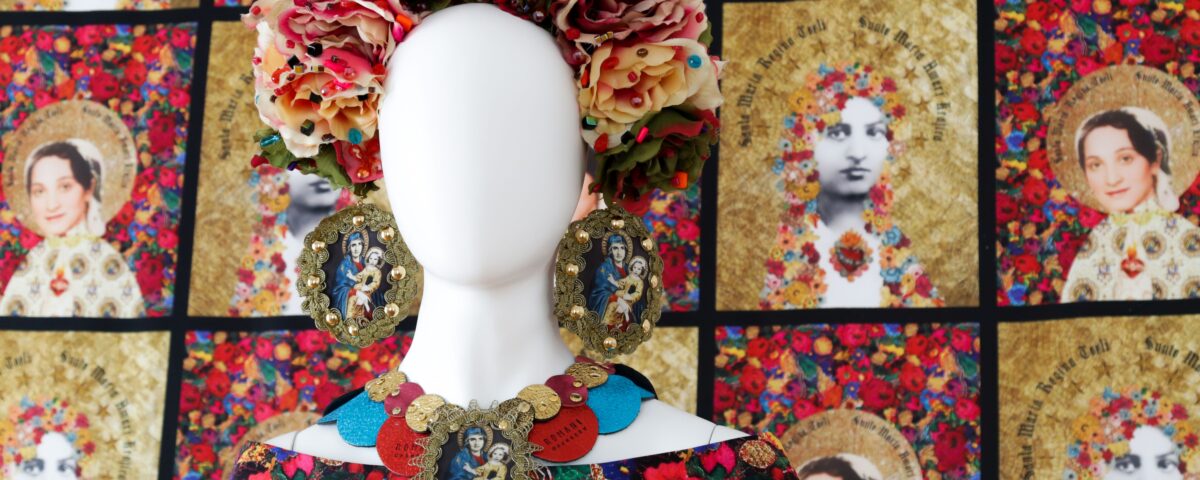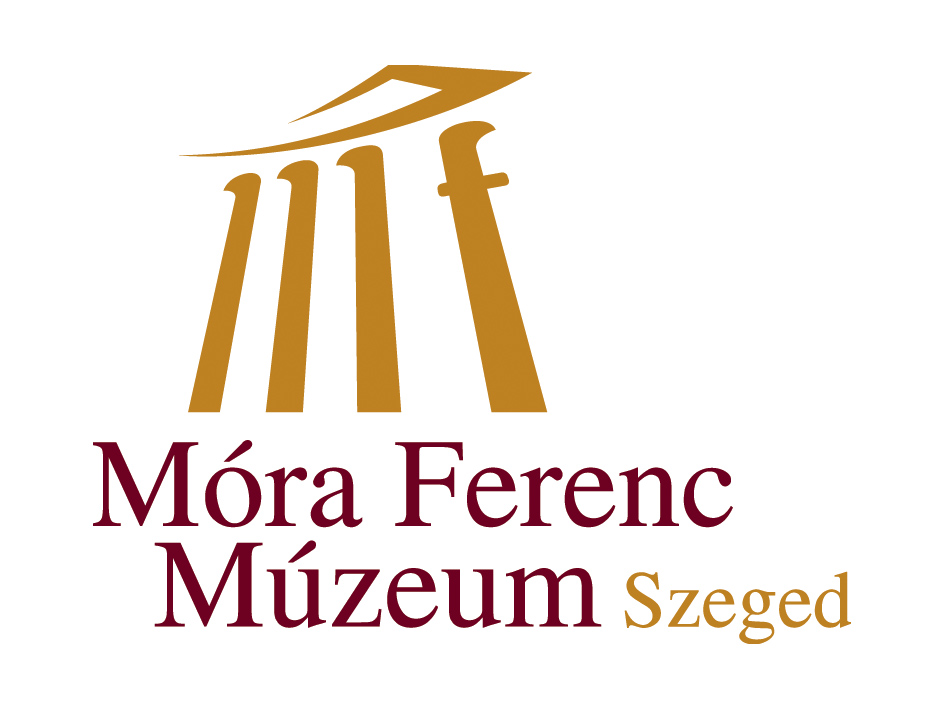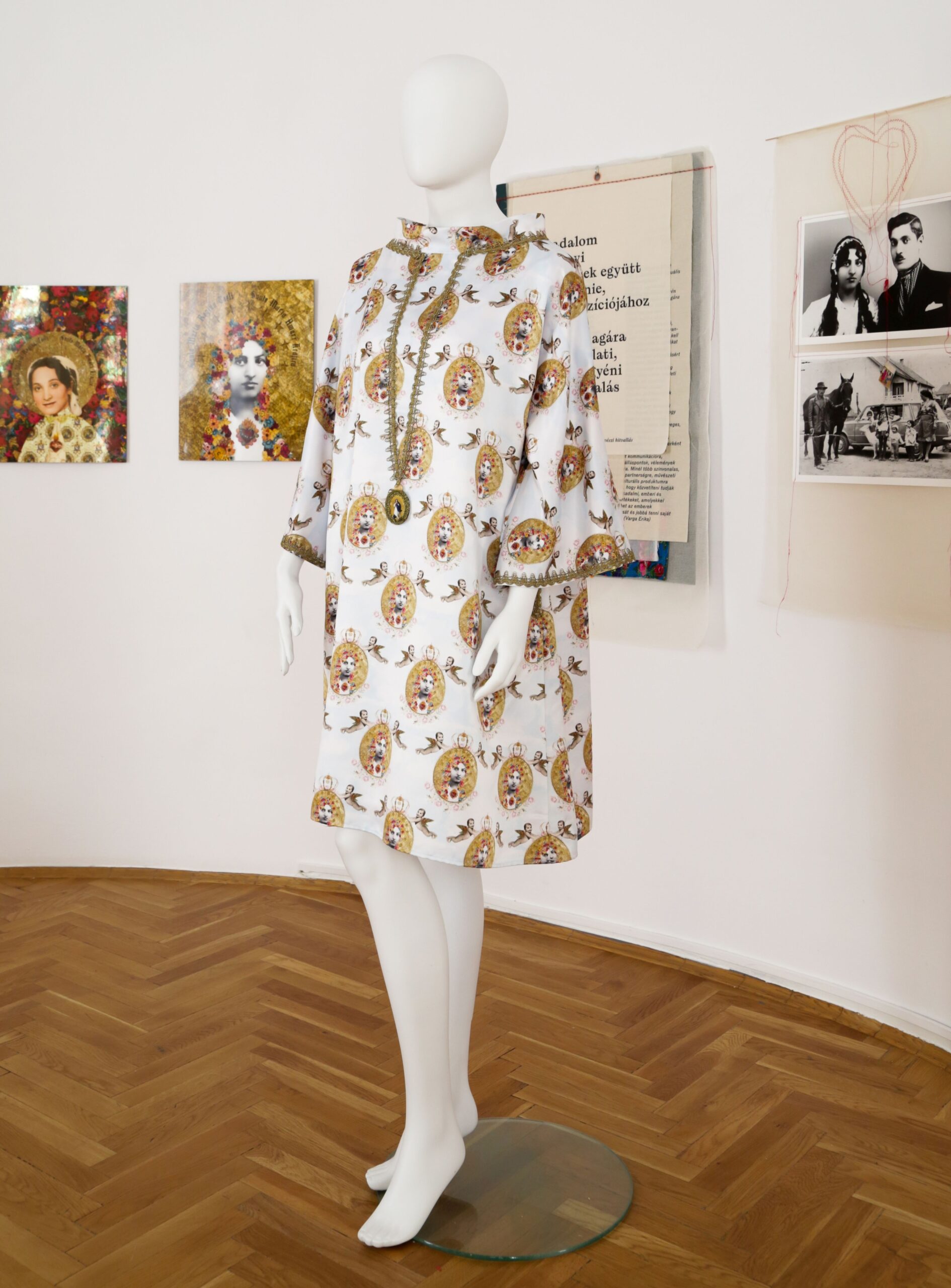Romani Design Fashion Art: Activism for tradition (Fekete House).

The exhibition will be open every day from 27 April to 22 September 2024, between 10-18.00.
Opening ceremony: 26 April 2024. 16:00
Romani Design is the world's first Roma fashion studio, founded in 2010 with the aim of promoting the social and cultural integration of the Roma community. Romani Design is the first widely known brand that proudly represents Roma culture and its links to Hungarian culture. They are constant players on the Hungarian fashion and design scene, and all their work is produced in the spirit of social responsibility. Erika Varga and Helena Varga, the founders and designers of the brand, present Roma folk art and cultural heritage through their work: Roma dressing culture is an important part of not only Hungarian, but also Carpathian Basin folk dressing traditions. Floral patterns, colours and depictions of the Virgin Mary all appear in traditional Roma costumes and folk art:
Romani Design's designers create modern garments, jewellery and accessories that place Roma cultural traditions in a modern, contemporary context.
The current exhibition at the Black House is entitled Romani Design Fashion Art: activism for tradition, which was first shown at the House of Traditions in 2023.
The concept of the exhibition focuses on activism, the layers, the mechanism and methodology of activist art, presented through the different spheres of activity of the fashion studio. In the first, opening space of the exhibition, some of the most iconic and distinctive pieces from the collections presented over the last 13 years are on display, accompanied by archival and contemporary photographs and interactive artwork descriptions. Through the exhibited assemblages, the visitor can learn about the vision of Romani Design's designers, their creative methods and the cultural mission that inspired the creation of the brand through personal experience and visual impressions. The exhibited garments include original vintage pieces by the designers' mother and maternal grandmother: the creative approach of Erika and Helena Varga, the simultaneous use of traditional and contemporary pieces, is rooted in the example they saw from their ancestors.
The bilingual fold-out "lookbook" booklets on the walls provide a thematic reading of the curatorial text accompanying the exhibition, accompanied by a handmade textile-based assemblage image, which also illustrates the pre-sustainability methods and the preparation stages of handmade and then digitised textile designs in the era of Romani Design.
In the second space of the exhibition, the emphasis is on verbal messages and activism through fashion. The corset fabric used in the bookbinding evolves from a background material to a base material on the sculptural garments, which feature different messages in English and Hungarian reflecting the brand's activist approach. Through the messages, the pieces and creations created by Romani Design designers appear as manifestos of their own worldview, richly illustrating for visitors the communication and attitude-shaping resources hidden in fashion and wearables. The messages refer, among other things, to the importance of social responsibility, the responsibility of knowledge and the challenges inherent in individual identity, and express the artists' stance against cultural exploitation. The exhibition also includes two video installations, an interview with the artists, also recorded at the House of Traditions, and a video montage of footage from previous fashion shows.
The designers: "For me, fashion is like words for a writer, colours for a painter. I can express myself through my clothes and create the world I like to live in" - says Erika Varga, jeweller and designer, the creator of Romani Design. Erika brings with her from her childhood and her traditional family the varied shapes and rich colours that characterise Romani Design products. Her mission is to pass on this heritage and to create bridges between cultures through fashion. Fashion as a contemporary tool for social dialogue is reflected in her collections, many of which are already part of permanent collections in museums, exhibitions and academic publications. In addition to fashion design, Erika's everyday life is filled with education and social work.
As a host of numerous classroom sessions and creative workshops, she uses experiential mentoring methodology to help Roma children and young people participating in the talent development programme to strengthen their cultural identity, self-confidence and career choices through professional workshops, internships and the brand's own scholarship programme. Erika was the editor-in-chief of the Roma children and youth magazine "Glinda" for 12 years, and her social commitment and promotion of Roma culture have been recognised with the European Citizenship Award, the Nationalities Award and the Heroine of the Year Award, among others.
The outstanding products of the Romani Design collections are the unique bags, accessories and jewellery designed and made by Helena Varga.Helena has often visited schools and gypsy settlements in disadvantaged villages as a cultural organiser, where she and her sister Erika have taught Roma folklore and skills and abilities development.The collection and photographic documentation of the settlements continue to inspire her work to this day.Helena's own designs are the mainstay of the Romani Design collections.
After learning about Roma folklore and jewellery, she found her own field: designing and making unique designer bags. Each Romani bag is a handcrafted design product, designed and handmade by her, with imagery reminiscent of impressionist paintings and a richness of detail that reflects the brand's environmental consciousness: patchwork patterns are made from scraps of material from other products, in unique and unrepeatable combinations.
Helena's love of traditional Romani ballads and songs plays an important role in her life, and her performances are a frequent feature of Romani Design fashion shows.She has been singing since she was a little girl, inheriting her singing voice and talent from her grandmother. She has performed at the 52nd Eucharistic Congress, the opening of the Roma pavilion at the 59th Venice Biennale, the opening of her solo exhibition Romani Design in the Circuit at the Museum of Applied Arts, numerous fashion events abroad and in Italy, and has given several concerts with her orchestra as part of the VEB2023 series. Helena founded her own orchestra at the beginning of 2022, which is a new addition to the domestic and international world music genre, fusing traditional folk and jazz styles.
The exhibition was conceived and curated by Dr. Szilvia Czingel, head of the Museum of Folk Arts and Crafts, the visual design and graphic elements are the work of Dr. Beatrix Torma and Péter Zalán Salát, the descriptions of the artifacts were made by Lili Kriston.









